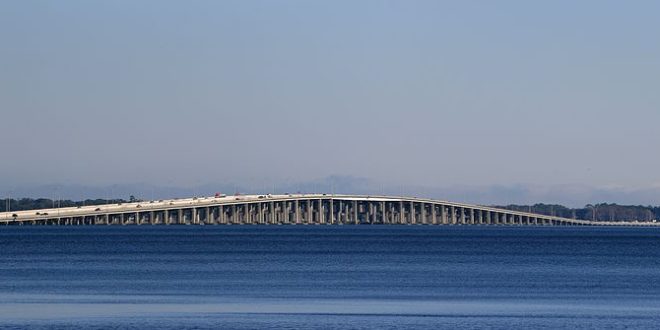
If all goes according to plan, and you are reading this on Friday, I am spending the weekend with my graduate Ecology of the St. Johns River class on a boat studying the St. Johns River. We left Jacksonville bright and early this morning, heading south to Astor, about 105 miles upstream from Jacksonville University. On Saturday, we’ll go farther south to Blue Springs to check on any manatees that may still be hanging around waiting for warmer water. We will return to Jacksonville on Sunday, tired and sunburned, but recharged from a few days on the river.
This is an extremely interesting trip that introduces students from across the country to the wonders of the river and all its various tributaries. For many of them, it is their first real extended time on the water. They often developed an interest in marine science from their time at the beach, from reading and videos, or just being around the water.
But seldom do we have students who have spent a great deal of time actually on the water.
This is an especially nice time of the year to be on the water. It has not gotten too hot, and typically the bugs are not too bad. Much of the country is still in the grip of winter. I just returned from what has become an annual pilgrimage to Washington, D.C., where once again there was a snowstorm. The cherry blossoms were about to bloom when the freezing snow stopped them cold. So much for the early spring.
As we leave Jacksonville, the students often comment about how wide the river is and how much water there is. Here in Jacksonville, before we get to the Buckman Bridge, the river is a broad expanse of water where the wind can take the surface from calm to rough in seconds when a storm develops.
The St. Johns River is about 310 miles long, with the Zero Mile Point at the mouth and Mayport. Jacksonville University sits at about mile point 20. As we proceed south past Orange Park (mile point 30) to Green Cove Springs (mile point 50), I can point out where the old mothballed ships from World War II used to sit. We are then off to Palatka (mile point 80) and a short detour up the Cross Florida Barge Canal and a quick look at the Ocklawaha River. We have discussed this area in class, so it will be good to show the students what it looks like today.
Then it is past Georgetown and Drayton Island (mile point 110) into the northern part of Lake George. This wide expanse of water really does help identify the St. Johns as a “river of lakes.” We will go by a couple of spring runs that enter the river here, too: Salt Springs Creek and Silver Glen Springs. Both of these areas hold blue crabs and mullet, which are normally thought of as marine species. This is because of high salt content of the water.
We’ll finally reach Astor (mile point 125) to spend the night. After a relaxing meal and a good night’s sleep, we’re off to Blue Springs (mile point 155). This part of the trip offers dramatic contrast to how the river looks. We go from a fairly broad waterway north of Astor to a much narrower and twisting river, interspersed with lakes.
Blue Springs marks about the halfway point in the 310-mile-long St. Johns River. With a little luck we’ll observe manatees in the springs before heading north to retrace our wake back to Jacksonville.
ASK RIVER LIFE
How are the manatees doing? Are they still on the Endangered Species List?
The good news is that the population is showing fairly healthy growth despite a high number of deaths. JU participates in an annual synoptic sampling to count manatees in the state every winter. When the survey started in 1991, there were only 1,267 manatees counted. In 2017, 6,620 were found, an increase from the 6,250 in 2016.
Manatees are still on the Endangered List, but discussions have begun to downgrade their status to Threatened. But manatees still deserve protection, and that will probably not stop anytime soon.
Manatees deaths last year totaled 520, with about 20 percent caused by boat strikes. When you are boating on the water, wear polarized glasses, watch for swirls as manatees dive and slow down in manatee protection zones.
River Life runs the last Friday of each month in The Florida Times-Union. E-mail A. Quinton White, executive director of Jacksonville University’s Marine Science Research Institute, with questions about our waterways at qwhite@ju.edu. For more on the MSRI, visit ju.edu/msri.
 Wave Magazine Online Jacksonville University News Hub
Wave Magazine Online Jacksonville University News Hub
